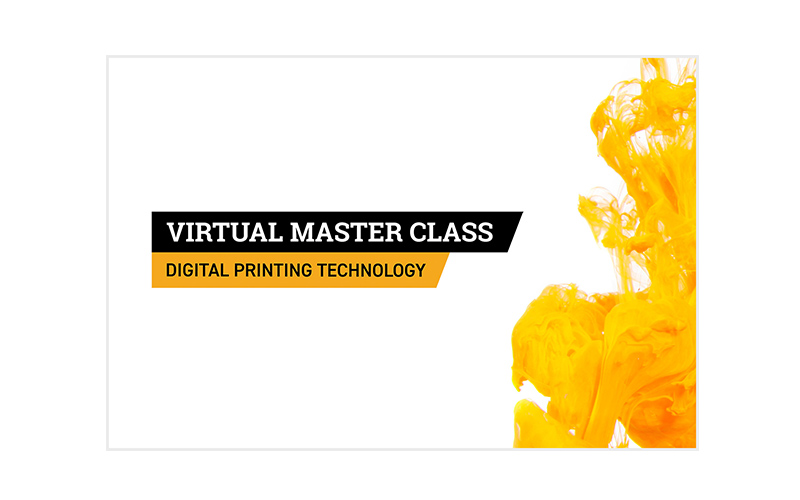Label Academy, the global training provider for the label and package printing industry, recently followed up its first virtual master class with a second one, this time covering flexible packaging. The online event attracted a distinguished panel of eight high-profile speakers from across the industry.
As with the previous virtual master class, which covered digital printing technology, Flexible Packaging was divided into two parts. Part one took place on Tuesday 20 October, and part two on Tuesday 27 October. Chairing both sessions was Labelexpo’s strategic director Andy Thomas-Emans. He was joined by guest speakers from BOBST, Esko, Flint Group, and OPM Labels & Packaging/FINAT. The event was sponsored by HP Indigo, MPS Systems and Synthogra, who also all fielded speakers.
Part one covered materials and print processes. Thomas-Emans began with an introduction to flexible packaging, describing the main types and benefits of each one. This paved the way for the next session, given by Nanette Thomas, CEO, Synthogra, who examined the various materials, multilayer constructions, performance demands on the various substrates and materials such as laminates, and their properties. Jan de Roeck, marketing director – industry relations and strategy, Esko, then covered creation of artwork and pre-press. He highlighted the addition of physical dimensions, text, graphics and structure, plus color management and proofing.
Closing part one, Hans Poortinga, printing and technology expert, MPS Systems, delved into printing processes and techniques. He emphasized the many considerations to make, such as web widths, tension, web treatment, quality control, compliance and testing.
The focus for Part two was on setting up a flexible packaging operation. The opening presentation was given by Christian Menegon, global business development manager, HP Indigo. He examined the relationship between flexible packaging and the label printer, and ways of developing the right ecosystem. This led into the next session with Niklas Olsson, global brand manager, Flint Group, who covered inks, coatings, curing and laminating. He stressed the importance of selecting the right inks for different uses, such as food contact.
Following this was a presentation given by Federico d’Annunzio, senior innovation advisor, BOBST, and winner of the prestigious R. Stanton Avery Global Achievement Award at this year’s Label Industry Global Awards. He examined converting flexible packaging, for example slitting, in-line lamination, and friction/slip. Christopher Ellison, managing director, OPM (Labels and Packaging) and president of european label federation FINAT, then rounded off the master class. He provided a detailed overview of his experience moving from labels to flexible packaging, sharing his insight into what the converter should be aware of when moving into this lucrative market.
Thomas-Emans said: “It is inspiring to see the appetite for learning gather momentum in these changing times, and with it, the growing popularity of our virtual master classes. Flexible packaging in particular will play a key role in the label and package printing industry’s recovery post COVID-19, so it’s extremely important that anyone seeking to move into this dynamic area is equipped with the right knowledge to embrace the opportunities.
“I’d like to extend my thanks to all the presenters and sponsors who took part in our flexible packaging virtual master class, and look forward to hosting further sessions covering the industry’s most pressing topics in the coming months.”
Echoing this, Menegon said: “In these times of uncertainty, it is extremely important to remain up to date with news and options, especially in our business lives. A virtual delivery seems today to be the safest way to contribute to this service to the industry. The theme of this master class is very engaging as it opens possibilities which were seen until today as disruptive. Entering flexible packaging for a label printer is for sure a challenge on many fronts. But the reality is that although it is viable, it is not necessarily simple, and worth some investigation. Such moves combined with digital printing bring great possibilities for a lucrative activity, combined with well-established label printing and converting. The path needs to be explained and hopefully simplified. Thanks to this virtual master class, it brings a lot of knowledge on the subject together.”
Thomas added: “This virtual master class is a great opportunity for the industry to get together and get skilled in flexible packaging within the narrow web industry. Especially in times like these when we have the perfect moment to start new or improve ongoing projects. We can all learn from each other to improve the industry.”
Olsson also said: “These online sessions are invaluable while we cannot travel and visit customers.”
The recordings for both parts of the virtual master class are available for purchase. For more information, visit https://go.labelexpo.com/e/707733/irtual-master-class-recordings/3dlpp6/569446447?h=3h8kLBhRDi1sEtVZwg4DdFr04lLbARrF9RUebgggVFw.
